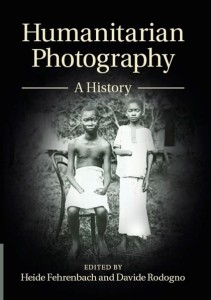Humanitarian Photography: A History edited by Heide Fehrenbach and Davide Rodogno was recently published by Cambridge University Press and features among its 12 chapters Peter Balakian’s “Photography, Visual Culture, and the Armenian Genocide.”
Ferenbach, Board of Trustees Professor of History at Northern Illinois University (NIU), said recently in an interview with NIU’s Newsroom Magazine, “This book examines how strategies of visual representation gave rise to a recognizable ‘humanitarian imaginary’ that not only reflects, but has also influenced, the historical evolution of humanitarianism itself.” Ferenbach went on to note that “the essays explore a broad range of histories from “the Indian famines of the late 19th century, the Congo atrocities of the 1890’s-1910, the Armenian Genocide, colonial and world wars, and the Biafra crisis of the 1960s, among others, and it focuses on some controversial and exploitative aspects of humanitarian photography, including attempts to regulate it in recent decades.”
“There’s a longstanding ethical concern in using photos of human suffering and asking whether the photos themselves can be brutalizing,” she continued. “On one hand, the photos open your eyes to the truth, but what are the dilemmas unleashed by this photography? That’s the ongoing tension in humanitarianism photography. … As viewers, part of the response we have is monetary, we want to do something to mitigate the suffering. But we also have to think about our own ethical positioning.”
Balakian’s essay argues, among other things, that the Armenian Genocide gave rise to a visual culture of complexity defined by a salient contrast between the ad hoc images taken by non-professional eye witnesses during the genocide and the highly produced and scripted images for mass audience appeal taken by and for the Near East Relief during the period of the campaign of relief and rescue in the years following World War I. The essay features six important images.
Balakian writes, “The two segments of visual culture in the Armenian case might be said to move from the raw to the cooked, and in doing so show us how the commercialism of a religious humanitarian movement articulates its visual project in contrast to the raw images taken of that same historical event under different conditions during the period of mass killing.”
Balakian is Donald M. and Constance H. Rebar Professor at Colgate University. His new books are Vise and Shadow: Essays on the Lyric Imagination, Poetry, Art, and Culture, and Ozone Journal, both published by University of Chicago Press.
Source: Armenian Weekly
Link: ‘Humanitarian Photography: A History’ Features Balakian’s chapter on Genocide and Visual Culture

